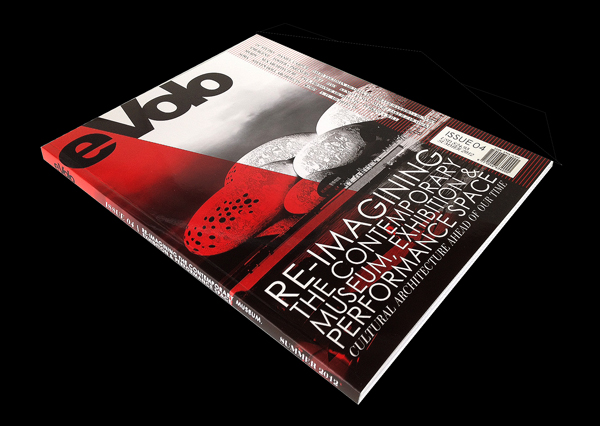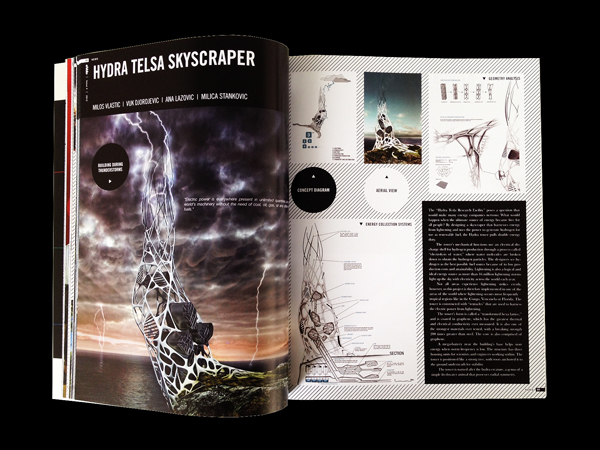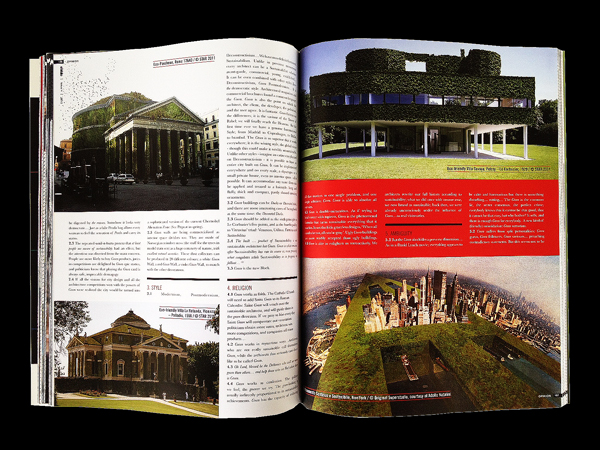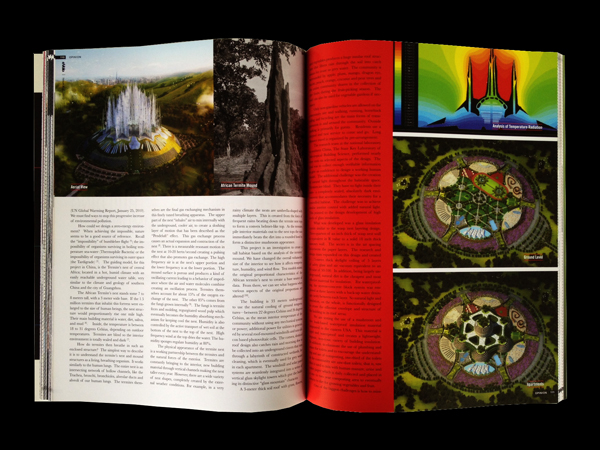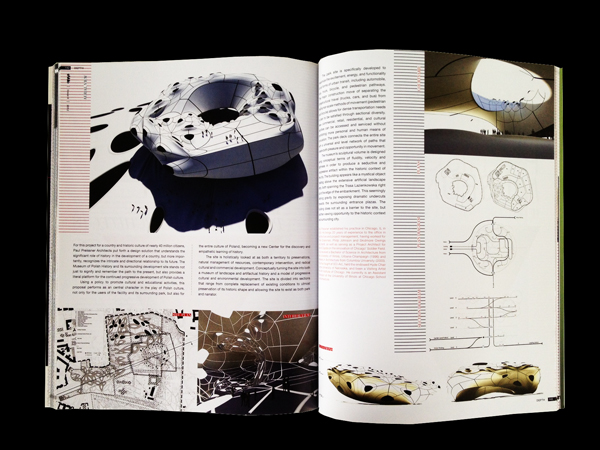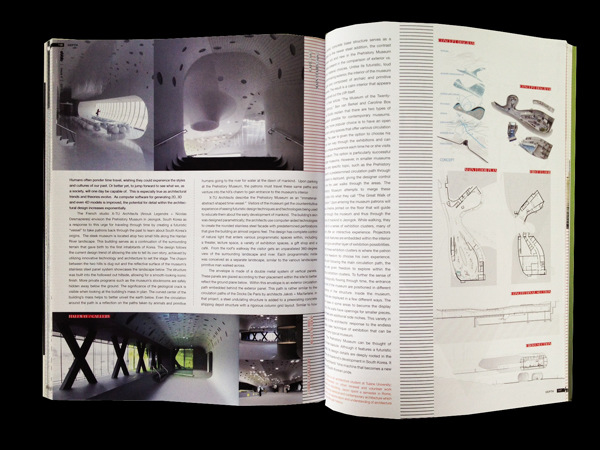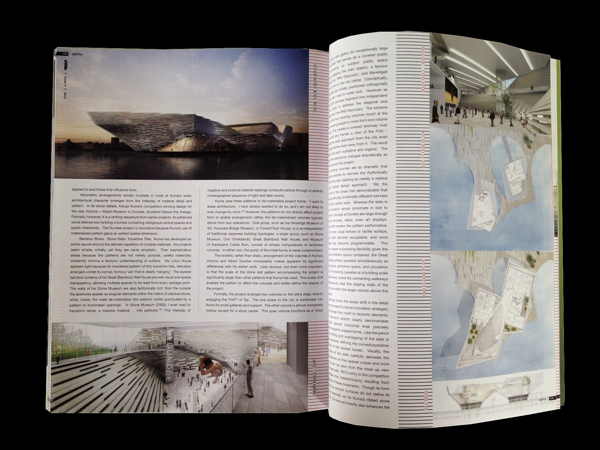Re-imagining the Contemporary Museum, Exhibition & Performance Space
Carlo Aiello
Digital copy
192 pages
Title: eVolo_04: Re-imagining the Contemporary Museum, Exhibition & Performance Space
Cover: Perfect Bound
Size: 9″ x 11.5″
Pages: 192
ISSN: 1946-634x
ISBN: 978-1938740039
INTRODUCTION
The architecture for performance and exhibition, being museums, galleries, music halls, pavilions, etc., has been in the leading edge of architectural innovation throughout the history and evolution of the discipline. Architects and designers experiment on new aesthetics, concepts, and ideas with projects that tend to have a flexible program and a large budget. In many cases, the main requirement of such structures is not only to accommodate a specific program but also to inspire the imagination of its users and challenge the current state of architectural design. Some examples, such as the Guggenheim Museum Bilbao by Frank Gehry or the Sydney Opera House by Jørn Utzon are considered design masterpieces of the 20th Century. Gehry’s Museum transformed the city of Bilbao from a small industrial Spanish city into a world destination, while Utzon’s Opera House become the symbol of Sydney and Australia.
This issue of eVolo studies the most innovative examples of performance and exhibition architecture today. These are projects that revolutionize architecture on many levels, including sustainability, aesthetics, technology, and urban design. It is interesting to point out that these works are not concentrated in one specific region, but are located in every corner of the globe; from MVRDV’s Comic and Animation Museum in China, to the new Broad Museum in Los Angeles by Diller Scofidio + Renfro, or Kengo Kuma’s Victoria and Albert Museum in Dundee, Scotland.
The variety of programs is as diverse as their location. Steven Holl’s Museum of Ocean and Surf in Biarritz, France creates awareness of the oceans’ fragile state and emulates the kinetic sensibility of water through sweeping walls and carefully articulated volumes. Holm Architecture’s circular Samaranch Olympic Museum in Tianjin, China is a study on framing and juxtaposing artificial and natural landscapes to generate a continuous exhibition loop. X-TU Architects’ Prehistory Museum in Jeongok, South Korea was parametrically designed as a futuristic vessel erected as a bridge atop hills along the Hantan River preserving the untouched historic landscape. Among other projects, Diller Scofidio + Renfro’s Museum of Image and Sound in Rio de Janeiro, Brazil, is an interface between exhibition spaces and the city. Other smaller scale projects are WORD’s Holocaust Memorial for Atlantic City’s Boardwalk, which acts as an inscriptive apparatus, which etches the history of the Holocaust in our memory, and the America’s Cup Pavilion by Daniel Carper, which functions as an epicenter for various activities. The design is based on the tectonic and function qualities of high-end sailing vessels.
For this issue we had the opportunity to interview one of the most promising architects of Mexico: Fernando Romero, who recently completed the Soumaya Museum in Mexico City. The museum has been praised by the critics as one of the most outstanding works of architecture in the country this decade. Fernando also shares with us the his experience in practicing architecture in Mexico, the United States, Europe, and China – an interesting insight on the major differences, challenges, and advantages of working in different cultures and economies.
The Opinion section includes essays on morphogenetic computational design and zero-energy buildings. Emmanuel Ruffo from the Graz University of Technology explains structural patterns formation and the digital tools utilized to explore these geometries and their potential use in architecture. On the other hand, Dr. Eugene Tssui, from the University of Science and Technology in Guangzhou, China, proposes the first true zero-energy building based on studies of the Termite’s nest of central Africa. Dr. Tssui´s “Evolutionary Architecture” is an in-depth study of living organisms and their natural processes. Finally, Beatriz Ramo, from STAR (Strategies + Architecture) in Rotterdam exposes the abuse by architects, designers, writers, politicians, etc., of the so-called “green” sustainable architecture, which in many cases is just an advertising gimmick and not true environmentally responsible designs.
In the News section Kurt C. Hunker from the NewSchool of Architecture and Design in San Diego examines the consequences and changes in high-rise architecture since 9/11. In this section we also present the winners of the 2011 eVolo Skyscraper Competition. The contest recognizes outstanding ideas that redefine skyscraper design through the implementation of new technologies, materials, programs, aesthetics, and spatial organizations. Studies on globalization, flexibility, adaptability, and the digital revolution are some of the multi-layered elements of the competition. It is an investigation on the public and private space and the role of the individual and the collective in the creation of dynamic and adaptive vertical communities.


